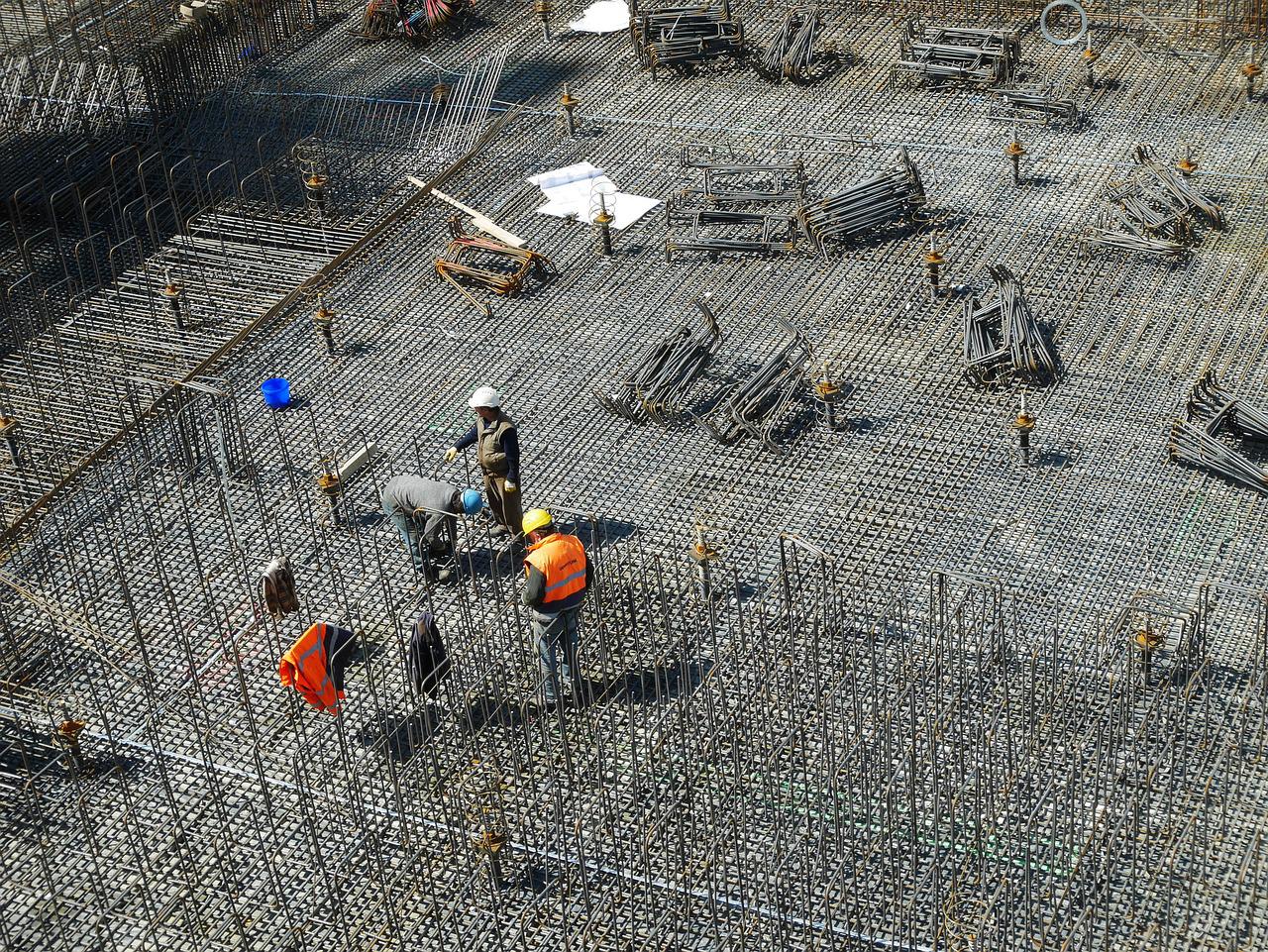Last Updated on June 6, 2023 by Eng Katepa
Structural engineer analyze, design, plan, and research structural components and structural systems to achieve design goals and ensure the safety and comfort of users or occupants. Their work takes into account mainly safety, technical, economic, and environmental concerns, but they may also consider aesthetic and social factors.
Structural engineering is a sub-discipline of civil engineering that deals with the structural integrity and strength of a building or structure. Structural engineering is a specialty of civil engineering that ensures the structures are safe, economically, stable, and don’t collapse under applied loads. It is mainly focused on the analysis and design of the structure.


Structural engineering theory is based on applied physical laws and empirical knowledge of the structural performance of different materials and geometries. Structural engineering design uses a number of relatively simple structural concepts to build complex structural systems. Structural engineers are responsible for making creative and efficient use of funds, structural elements, and materials to achieve these goals.
Also Read: Engineering Ethics
Responsibilities of a Structural Engineer
Structural engineers are responsible for engineering design and structural analysis. Entry-level structural engineers may design the individual structural elements of a structure, such as the beams and columns of a building. More experienced engineers may be responsible for the structural design and integrity of an entire system, such as a building.
Structural engineers often specialize in particular types of structures, such as buildings, bridges, pipelines, industrial, tunnels, vehicles, ships, aircraft, and spacecraft.
Structural engineers ensure that buildings and bridges are built to be strong enough and stable enough to resist all appropriate structural loads (e.g., gravity, wind, snow, rain, seismic (earthquake), earth pressure, temperature, and traffic) to prevent or reduce the loss of life or injury.
They also design structures to be stiff enough to not deflect or vibrate beyond acceptable limits. Human comfort is an issue that is regularly considered within the limits. Fatigue is also an important consideration for bridges and aircraft design or for other structures that experience many stress cycles over their lifetimes.
Consideration is also given to the durability of materials against possible deterioration which may impair performance over the design lifetime.
A structural engineer also plays a major role in a team among other professionals like surveyors, quantity surveyors, and architects engineers.
The following tasks must be performed by a structural engineer:
- Design models of structures using the software.
- Assessing the reaction of structures to pressures and stress.
- Finalizing the appropriate concrete materials that would be suitable for the structure.
- Assessing the budget of the project.
- Liaising to ensure that newly erected buildings are structurally sound with construction contractors.
- Using computers and computer-aided design technology for simulation purposes.
Also Read: Engineering Disciplines
Skills required to become a Structural Engineer
It’s necessary for every structural engineer to possess the following skills:
- Analytical skills
- Detailed orientation
- Creativity
- Strong interpersonal skills
- Communication skills
- Knowledge of CAD software applications like ETABS, SAFE, STAAD Pro, PROKON, RAVIT, ROBOT, AutoCAD, etc.
- Excellent computer skills
- Knowledge of construction management
- Familiarity with codes and regulations specific to the industry
- Up-to-date technical skills
Also Read: Engineer | Definition and History You Should Know Right Now
Role of Structural Engineer in Building design
The role of a structural engineer today involves a significant understanding of both static and dynamic loading and the structures that are available to resist them. The complexity of modern structures often requires a great deal of creativity from the engineer in order to ensure the structures support and resist the loads they are subjected to
A structural engineer will typically have a four or five-year undergraduate degree, followed by a minimum of three years of professional practice before being considered fully qualified.
Structural engineers are licensed or accredited by different learned societies and regulatory bodies around the world (for example, the Institution of Structural Engineers in the UK). Depending on the degree course they have studied and/or the jurisdiction they are seeking licensure in, they may be accredited (or licensed) as just structural engineers, as civil engineers, or as both civil and structural engineers.
Another international organization is IABSE(International Association for Bridge and Structural Engineering). The aim of that association is to exchange knowledge and advance the practice of structural engineering worldwide in the service of the profession and society.
- Urbanization, buildings, and civil infrastructure are the most important in the world for any economy. Require lots of natural resources and energy required for their construction, operation, maintenance, and deterioration.
- Structural engineers play an important role in the efficient design, construction, and execution of a building. At the beginning of construction projects in collaboration with structural engineers, architects, owners, and construction managers, architects decide on the effectiveness, feasibility, and cost-effectiveness of concepts. As the project progressed to the design stage, structural engineers produced the first set of executive design documents.
- Structural engineers have traditionally not identified themselves with environmental sustainability. Growing concerns for the natural environment, the rise of smart cities, and the growing importance of sustainability and energy efficiency are driving the demand for structural engineers.
- Building construction consumes natural resources, potable water, and energy. Secondly, the construction process also contributes to 30% of global greenhouse gas (GHG) emissions. Thus, a sustainable environment is not achievable without the contribution of the building & construction sector, especially the structural engineering domain.
- The renewable energy department is a great leading factor. The concept of sustainability is gaining popularity these days and it is clearly increasing its applicability in the energy sector.
Structural Design
Structural design is the approach whereby the Structural Engineer translates the architectural drawings to produce a safe and economical structure.
The structural design for a building also must ensure that the building can stand up safely, and be able to function without excessive deflections or movements which may cause fatigue of structural elements, cracking or failure of fixtures, fittings, or partitions or discomfort for occupants.
It must account for movements and forces due to temperature, creep, cracking, and imposed loads. It must also ensure that the design is practically buildable within acceptable manufacturing tolerances of the materials. It must allow the architecture to work, and the building services to fit within the building and function (air conditioning, ventilation, smoke extract, electrics, lighting, etc.). The structural design of a modern building can be extremely complex and often requires a large team to complete.
Structural Elements Parts
A structural element is a combination of beams, columns, slabs, foundations, and walls rigidly connected together to form a monolithic frame. Each individual member must be capable of resisting the forces acting on it, so the determination of these forces is an essential part of the design process.
The structural elements are as follows: Slabs; Reinforced concrete slabs are used on floors, roofs, and walls of buildings and as the decks of bridges. The floor system of a structure can take many forms as in situ solid slabs, ribbed slabs, or precast units. The slab may be span in one direction or in two directions and they may be supported on monolithic concrete beams, steel beams, walls, or directly by the structure’s columns.
Also Read: Best CAD Software For Architects | All You Need to Know
1. Columns;
The column structures carry loads from the beams and slabs down to the foundations and therefore they are primarily compression members, although they may also have to resist bending forces due to the continuity of the structure. The design of the column is governed by the ultimate limit state, deflections and cracking during service conditions are not usually a problem, but nevertheless, correct detailing of the reinforcement and adequate cover are important.
Class of Columns
Columns can be classified as;
- Braced column – where walls resist the lateral loads or some form of bracing.
- Unbraced column – where the lateral loads are resisted by the bending action of the columns.
Columns are further classified in BS 8110 as either short or slender. A column is short if both lex/h and ley/bare;
– less than 15 for a braced column,
– less than 10 for an unbraced column.
Where
lex effective height in respect of the column-major axis,
ley effective height in respect of column minor axis,
h depth in respect of the major axis,
b width in respect of the minor axis.
While lex and ley = βlo
A column can be classified also as slender if the slenderness ratio about either axis is;
>15 for a braced column
>10 for an unbraced column
2. Slabs;
Reinforced concrete slabs are used on floors, roofs, and walls of buildings and as the decks of bridges. The floor system of a structure can take many forms as in situ solid slabs, ribbed slabs, or precast units.
The slab may be span in one direction or in two directions and they may be supported on monolithic concrete beams, steel beams, walls, or directly by the structure’s columns.
3. Foundations;
A building is generally composed of a superstructure above the ground and a sub-structure that forms the foundations below the ground. The foundation’s transfer and spread the loads from a structure’s columns and walls into the ground.
The safe bearing capacity of soil must not be exceeded otherwise excessive settlement may occur, resulting in damage to the building and its service facilities, such as the water or gas mains. Foundation failure can also affect the overall stability of a structure so that it is liable to slide, lift vertically or even overturn.
It is important to have an engineering survey made of the soil under a proposed structure so that variations in the strata and the soil properties can be determined.
In the design of foundations, the areas of the bases in contact with the ground should be such that the safe bearing pressures will not be exceeded. Settlement takes place during the working life of the structure, therefore the design loading to be considered when calculating the base areas should be those that apply to the serviceability limit and typical values that can be taken as
- Dead plus imposed load = 1.0Gk + 1.0Qk
- Dead plus imposed load = 1.0Gk + 1.0Wk
- Dead plus imposed load plus imposed load =1.0Gk + 0.8Qk + 0.8Wk
These partial factors of safety are suggested as it is highly unlikely that the maximum imposed load and the worst wind occur simultaneously.
4. Beams;
can be defined as horizontal members used to carry loads from the floor to columns or walls. A reinforced concrete beam design consists primarily of producing member details that will adequately resist the ultimate bending moments, shear forces, and torsion moments. At the same time, serviceability requirements must be considered to ensure that the member will behave satisfactorily under working loads.
All calculations should be based on the effective span of a beam that is given as follows:
- A simply supported beam – the smaller of the distances between the centers of bearings or the clear distance between supports plus the effective depth
- A continuous beam – the distance between centers of supports
- A cantilever beam – the length to the face of the support plus half the effective depth or the distance to the center of the support if the beam is continuous.
5. Trusses
A truss is a structure comprising members and connection points or nodes. When members are connected at nodes and forces are applied at nodes members can act in tension or compression. Members acting in compression are referred to as compression members or struts while members acting in tension are referred to as tension members or ties.
Most trusses use gusset plates to connect intersecting elements. Gusset plates are relatively flexible and unable to transfer bending moments. The connection is usually arranged so that the lines of force in the members are coincident at the joint thus allowing the truss members to act in pure tension or compression.
Trusses are usually used in large-span structures, where it would be uneconomical to use solid beams.
6. Plates
Plates carry bending in two directions. A concrete flat slab is an example of a plate. Plates are understood by using continuum mechanics, but due to the complexity involved, they are most often designed using a codified empirical approach, or computer analysis.
They can also be designed with yield line theory, where an assumed collapse mechanism is analyzed to give an upper bound on the collapse load. This technique is used in practice but because the method provides an upper bound (i.e. an unsafe prediction of the collapse load) for poorly conceived collapse mechanisms, great care is needed to ensure that the assumed collapse mechanism is realistic.
7. Shells
Shells derive their strength from their form and carry forces in compression in two directions. A dome is an example of a shell. They can be designed by making a hanging-chain model, which will act as a catenary in pure tension and inverting the form to achieve pure compression.
8. Arches
Arches carry forces in compression in one direction only, which is why it is appropriate to build arches out of masonry. They are designed by ensuring that the line of thrust of the force remains within the depth of the arch. It is mainly used to increase the bountifulness of any structure.
9. Catenaries
Catenaries derive their strength from their form and carry transverse forces in pure tension by deflecting (just as a tightrope will sag when someone walks on it). They are almost always cable or fabric structures. A fabric structure acts as a catenary in two directions.
Also Read: Best Engineering Books For Engineers
Materials
Structural engineering depends on the knowledge of materials and their properties, in order to understand how different materials support and resist loads. It also involves a knowledge of Corrosion engineering to avoid for example galvanic coupling of dissimilar materials.
Common structural materials are:
- Iron: wrought iron, cast iron
- Concrete: reinforced concrete, prestressed concrete
- Alloy: steel, stainless steel
- Timber: hardwood, softwood
- Aluminium
- Concrete blocks
- Cement and Sand blocks
- Bricks
Where does a Structural Engineer work?
The major employers of structural engineers include:
- Engineering consultancies
- Local authorities
- Railway operators
- Civil Engineering contractors
- Public utility companies
- The Civil Service
- The Armed Forces
We hope this article helped you learn about Structural Engineers. You may also want to learn about What is Civil Engineering? | History and Functions, Engineering Disciplines, Brick Masonry | Advantages, and Disadvantages, and Structural Engineers.
If you liked this article, please Join WebsiteForEngineers on Telegram, and you can also find us on Pinterest, Twitter, and Facebook.

